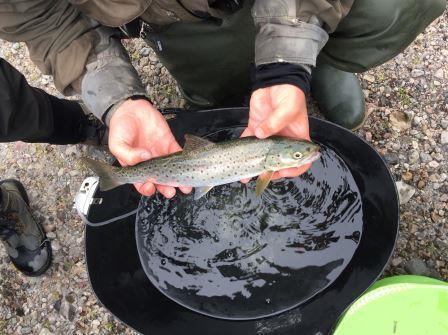It is hoped that an acoustic tracking project can solve a mystery about sea trout’s movements.
Like the eel or the much vaunted salmon, there has long been questions about where exactly sea trout go while at sea.
This iconic species loved by anglers all over the world has declined over the last 50 years. Conservationists need to understand the behaviour of these fish at sea to help reverse their decline.
Now a project in Loch Laxford in the far north west of Scotland is using the best available technology to understand the behaviour and risk profile of the much-loved species.
A total of 40 acoustic receivers have been strategically positioned throughout the Loch in order to provide coverage of different habitat types, aquaculture facilities, and likely migratory routes. And 99 sea trout have been fitted with transmitter tags, meaning they will be detected by any receivers they swim near. The receivers will be recovered at the end of October.
Four organisations are teaming up for the project – West Sutherland Fisheries Trust (WSFT), Atlantic Salmon Trust (AST), The Scottish Centre for Ecology and the Natural Environment, University of Glasgow (SCENE), and Marine Scotland Science (MSS).
Adam Beynon-Jones, WSFT’s assistant biologist who instigated the project, running this summer, said: “We hope to influence management practices for the benefit of wild sea trout populations by gaining a more detailed understanding of their behaviour within the coastal environment.”
Dr Matthew Newton of AST and SCENE said: “This is an incredibly exciting project to be part of and is testament to the WSFT team to be able to get a project of this scale off the ground. The data, analysed by SCENE, will provide WSFT with the results to implement new management and conservation strategies; something the AST is proud to support through their acoustic telemetry programme.”
Sea trout are among Scotland’s most iconic angling species and their presence indicates clean and healthy aquatic ecosystems. They are under threat and are listed as a UK Biodiversity Action Plan priority species.
Some of the threats to sea trout survival include exploitation, predation, habitat degradation, pollution, and barriers to migration (preventing them from accessing spawning grounds). Additionally, natural sea lice populations can multiply within coastal salmon farms potentially leading to dangerous infestations on wild sea trout.
The project aims to discover how sea trout are behaving within Loch Laxford.
